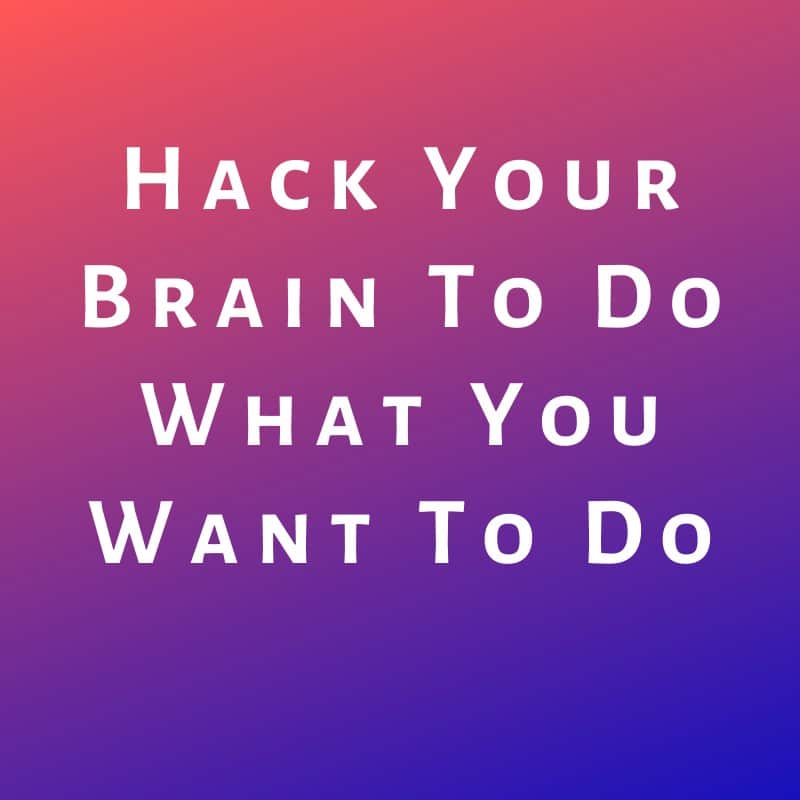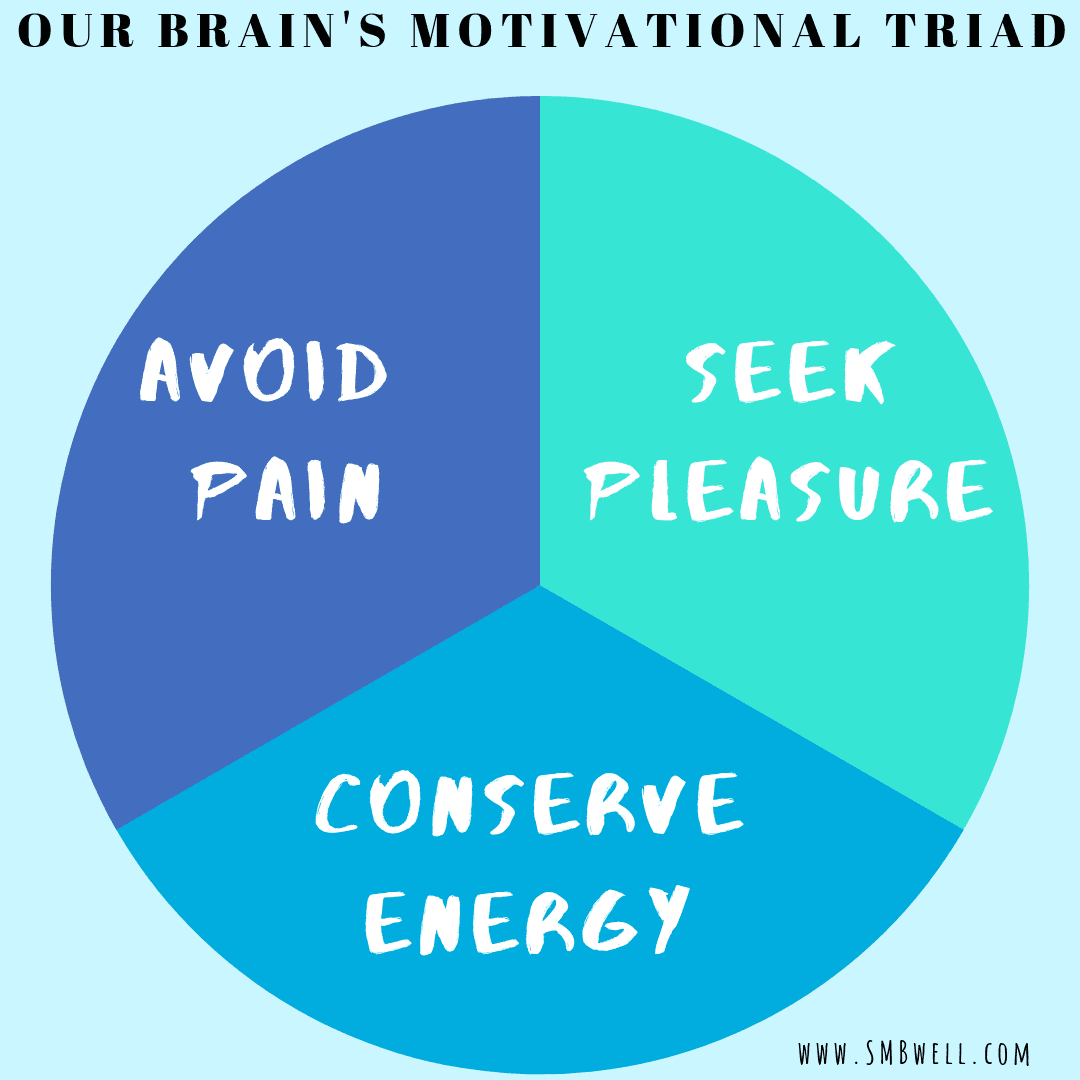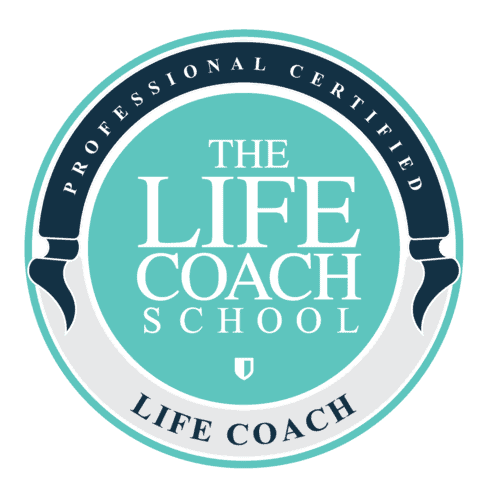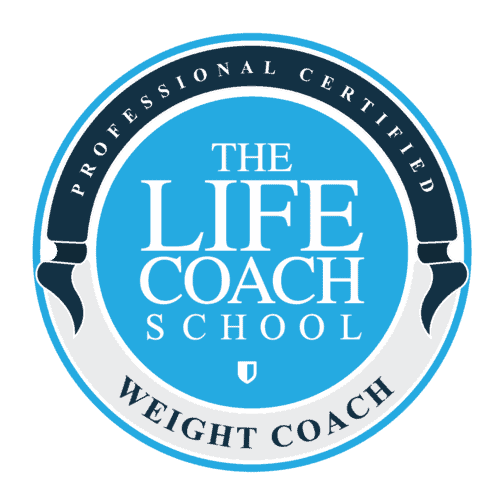Podcast: Play in new window | Download
Subscribe: Apple Podcasts | Spotify | Amazon Music | RSS | More
How Many Times Do You Start Something But Don’t Finish?
How good does that feel?
Good news is?
You’re not alone.
Better news?
It’s not your fault.
Best news?
I can help!
I’ve helped hundreds of women finish what they start; To Feel better in their days; To Live lives they LOVE!
In this post, I’ll share why forming habits over choosing daily behaviors is important and then share 2 of my favorite tools to form and build habits, If you’re interested in which habits have the most bang for the buck in setting you up for success in your days and life, I have a program starting this month that will not only detail those but also guide you as you cement those habits into your life!
Why Should We Make Habits?!?
Why should we put the effort in to make our behaviors habitual? Why not just wake up every morning and decide what to do? Let go? Be chill? There are two important factors to take into account regarding neuroscience and our behaviors when getting motivated to create habits.
WHY WE DON’T DO WHAT WE WANT TO DO?!?
1. The Motivational Triad
Our brain has a motivational triad. Its’ goal is to seek pleasure, avoid pain, and conserve energy. Our brain is wired for our survival; to make sure we make it to the next day alive. It does not care if we are happy. It does not care if we feel fulfilled in our days. It does not care if we make it to the next day with confidence or happiness. It only cares that we make it to the next day. Our brain does this by repeating over and over what we’ve always done because, as far as it’s concerned, that’s success: you’re still alive, right? Our brain wants us to be safe, comfortable and to expend as little energy as possible.
This is not serving us or our society. In order to change habits, we have to practice different behaviors which means that our brain will rebel. As far as your brain is concerned, if you lived through yesterday, it was a successful day. It likes things to be easy and when you change your habitual behaviors, you are breaking the “habit of easy”.
Choosing something different goes against the brain’s triad: it takes energy, it is uncomfortable, it is not pleasant. Which is why the 2 tools I mention later are helpful and signing up for a program like mine where you have support and accountability can make all the difference.
2) Decision Fatigue
Another reason why creating habits is a something to strive towards is because of what is called decision fatigue. Did you know that every time your brain makes a decision it uses energy? Each and every decision: Whether to turn right or left. Whether to wear blue or black. Whether to yell or take a deep breath. Whether to eat an apple or a cupcake.
The more of our desired behaviors that we can make habitual (something we do without thinking about it), the better. When we wait until the time to make a decision about what we are going to do, we set ourselves up for failure. Our brain is tired from all the BS we’ve thrown at it during the day and will not pull on its’ adult, cognitive skill power to make the best decision for us. This is why willpower doesn’t work to set habits into place. This is also why we may start the day feeling proud and powerful but by 4 pm be elbow deep in a bag of chips while still procrastinating from doing that one task we wanted to get done today.
Adding decision fatigue with the brain’s motivational triad is the reason why we need to take a more active role in what we do and how we spend our days. A level of structure and planning sets us up to live a life we love. The more we can move our desired behaviors into a habitual loop, like brushing our teeth before bed or using the directional signal when we are driving, the more success w will have. Forming automatic habits in an intentional way sets us up for success.
Two Tools to Form Habits
1. Pairing (also called habit stacking)
Pairing, or what some call habit stacking, is about using the motivational triad to work for us. The brain is the most productive mini-computer in the world. It is wired to repeat behaviors over and over because, with its’ logic, we’ve done them before and survived.
This can work for or against us. For example, if we always have a glass of wine when we get home from work, the brain will do everything in its’ power to repeat that behavior over and over because hey, you’re still alive aren’t you? Our brain doesn’t care about the extra 15 pounds, the internal inflammation, the depressant nature of alcohol, or how groggy we feel in the morning. Rather, our brain asks the question: “Are you alive? Yes? Job done.”
In understanding that the brain will come up with excuses as to why we shouldn’t change our habits or behavior, we can overrule it. One way of doing this is to pair something positive with a desired new behavior.
For example, I do not love exercising on my elliptical. However, I do love to read. So, I pair reading with working out on the elliptical. I have a reading rack that allows me to get a kick ass workout on the elliptical while reading some of my favorite books. Another example is how I encourage myself to drink water throughout the day. I keep a glass by my bathroom sink. Whenever I go to the bathroom, I fill the water after I’ve washed my hands and get an extra 12-14 ounces in. Here are some other ways you can use this tool:
- If you are trying to consistently do laundry, you can save your favorite podcast to listen to while you fold.
- If you are trying to eat more vegetables, you can get out a bag of carrots to munch on when you chat with your kids after school.
- If you’re trying to get into bed earlier and you like doing Soduku, you can keep your Soduku book by your bed so you are only allowed to do it if you get in bed by a certain time.
- If you’re trying to improve your leg strength, choose to do 10 squats when your coffee is brewing.
- I wanted to start my day with positive intention. I keep my alarm across the room (so that I don’t have the option to push snooze). When I click off the alarm, I pair it with the habit of saying to myself: I wonder how today is going to be awesome.
I could go on and on. This technique works warriors. What do you like to do? Share in the comments below how can you pair that with a new behavior that you’d like to start doing?
2. REPLACING
This tool continues to use the power of the brain by capitalizing on its’ interest in doing things over and over. What we do is shift something we’re doing (no need to tell the brain). Choose to make one small shift in our routine.
Take the example of a person habitually pouring a glass of wine when she comes home from work or is preparing dinner. She has the habit of drinking yet recognizes that the habit of unconsciously ingesting anything, let alone an inflammatory substance, isn’t in her best interest. Use the tool of replacement to shift that habit. Choose to pour yourself a soda water with lemon or ice cold water with a drop of grapefruit essential oil instead of wine. There are three pieces to this habit tool that make it work:
1. Pre-thinking X2: First Think ahead of time what you want to replace (eg wine with tea) or TV watching with reading. Second, Understand that your brain likes to do the same things over and over. Expect your brain to resist ie come up with excuses why you shouldn’t do what you have planned to do but you are ready for it and have thought in advance some comebacks. Think of what you’ll do, think of how you’ll be the boss of your brain. For me, this sounds like me saying: thank you brain, I know you usually like wine when preparing dinner. Great news: we are trying something new today! Or, yep, no wine but no problem. I will sleep so much better. You are in charge warrior. I like thinking of my brain as a car or a bus. Who’s driving? Your adult cognitive brain or that toddler “but I want it” brain? Move that toddler to the back seat.
2. Ease: make it easy. Before the time that you’re looking to shift a piece of your behavior, set yourself up for success. Move the wine to the basement. Put the bag of tea or lemon out on the counter when you leave for work.
3. Celebration: Take a moment to celebrate. To feel proud. To feel “shine” as Brian Fog, author of Tiny Habits terms it. Bonus stars if you feel it and add in a physical celebratory gesture. What do you do when your favorite team wins? Fist pump? I put my hands in the air and wiggle my shoulders. If I do that physical action after doing something I say I’m going to do, I feel “shine” and cement into my brain motivation to do it again in the future.
Now It’s Up To You!
I am a firm believer that life can (and should) be grand. Where are you feeling a bit flat in your life? Choose an area of your life where you’re not feeling great or where you know you could be doing better, choose one of the above habit tools and go. Reminder: I am here for you. I’ve dedicated my life to helping as many women live a life they love as possible.
Better yet, if you’re reading this real time, hurry over to sign up for my popular program . We take the habits that set you up for success and set up a framework that is guaranteed to work. Women who take the program say it’s changed their life; they feel like different people.
This is your one life.
Enough thinking.
Take action today.
Sign up for the program now before doors close until September.
What’s one way you’d like your life to be different August 1st? December 31, 2020?
If you want something different, you must do something differently.
I know how.
Lets do this.
No more excuses.








Trackbacks/Pingbacks